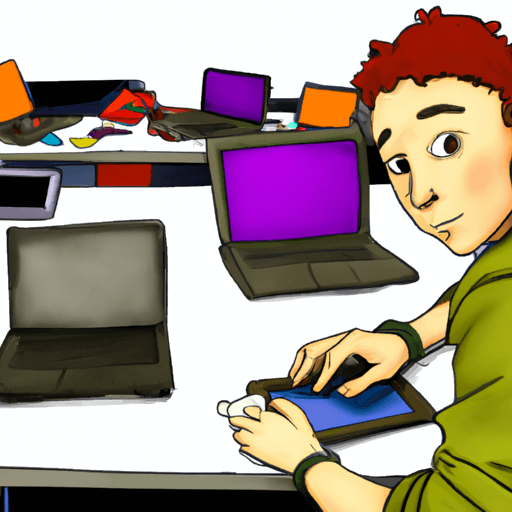How Technology Has Revolutionized Education in the Past Decade
In the past decade, technology has revolutionized education. From classroom applications to online learning platforms, technology has changed the way students learn and access information. This article will explore the positive and negative effects of technology on modern education, and consider the implications of technology on the future of education.
Classroom Applications
Classroom applications have made it easier for teachers to engage students in the learning process. Teaching tools such as interactive whiteboards, digital projectors, and educational software have enabled teachers to more effectively demonstrate concepts and engage students in meaningful learning experiences. This technology has also helped to streamline the teaching process, allowing teachers to cover more material in less time.
In addition, classroom applications have increased student access to information. Mobile devices and laptops can be used to research topics in real-time, which has allowed students to explore topics in greater depth than ever before. Students can also use technology to collaborate with one another, which has allowed for more meaningful learning experiences.
Online Learning Platforms
Online learning platforms have provided students with greater access to educational materials than ever before. Students can access course materials, lectures, and other educational resources on these platforms, which has enabled them to learn at their own pace. In addition, online learning platforms have allowed students to connect with one another, creating a more interactive learning experience.
However, there are some drawbacks to online learning platforms. Namely, these platforms can be difficult to navigate, and students may struggle to find the relevant materials they need. Additionally, online learning platforms may not be able to replicate the experience of being in a physical classroom.
Virtual Reality
Virtual reality has the potential to revolutionize education. Through virtual reality, students can explore new worlds and engage with complex concepts in an immersive environment. Virtual reality can also be used to create interactive learning experiences, such as virtual field trips and simulations. In addition, virtual reality can be used to teach difficult concepts, such as anatomy or physics, in a more engaging way.
However, virtual reality can also be used to create distractions that detract from the learning process. Additionally, virtual reality may not be accessible for all students, as the technology can be expensive.
Implications for the Future of Education
Technology has had a significant impact on the way students learn and access information. Technology has allowed for more engaging and interactive learning experiences, and has enabled students to learn at their own pace. Technology has also made education more accessible, as students can access course materials and lectures from anywhere in the world. As technology continues to evolve, it is likely that these trends will continue.
Ultimately, technology has revolutionized education in the past decade, and has had both positive and negative effects. As technology continues to evolve, it is likely that these trends will continue, and that technology will continue to reshape the future of education.

















Comments
Leave a Comment